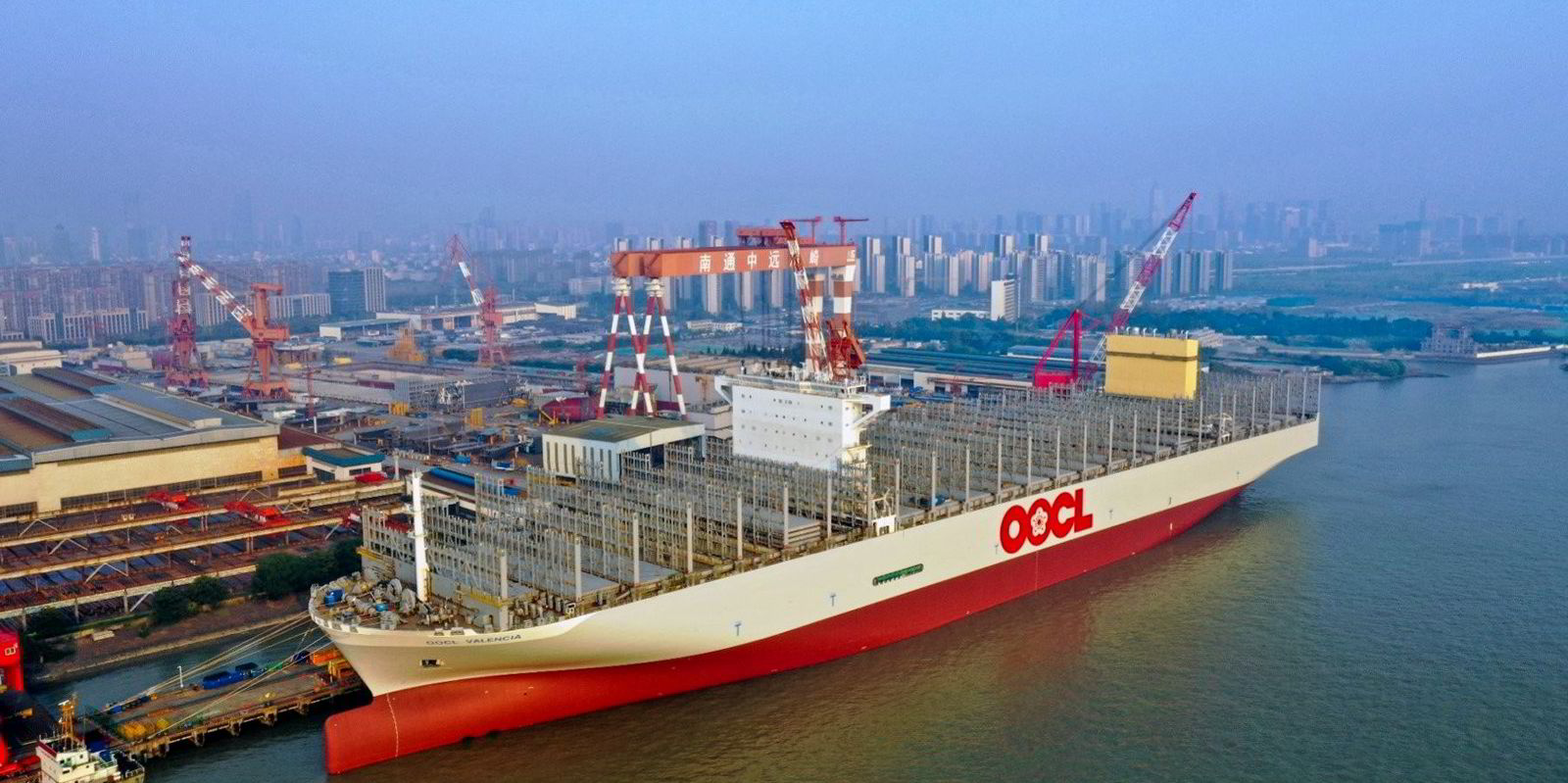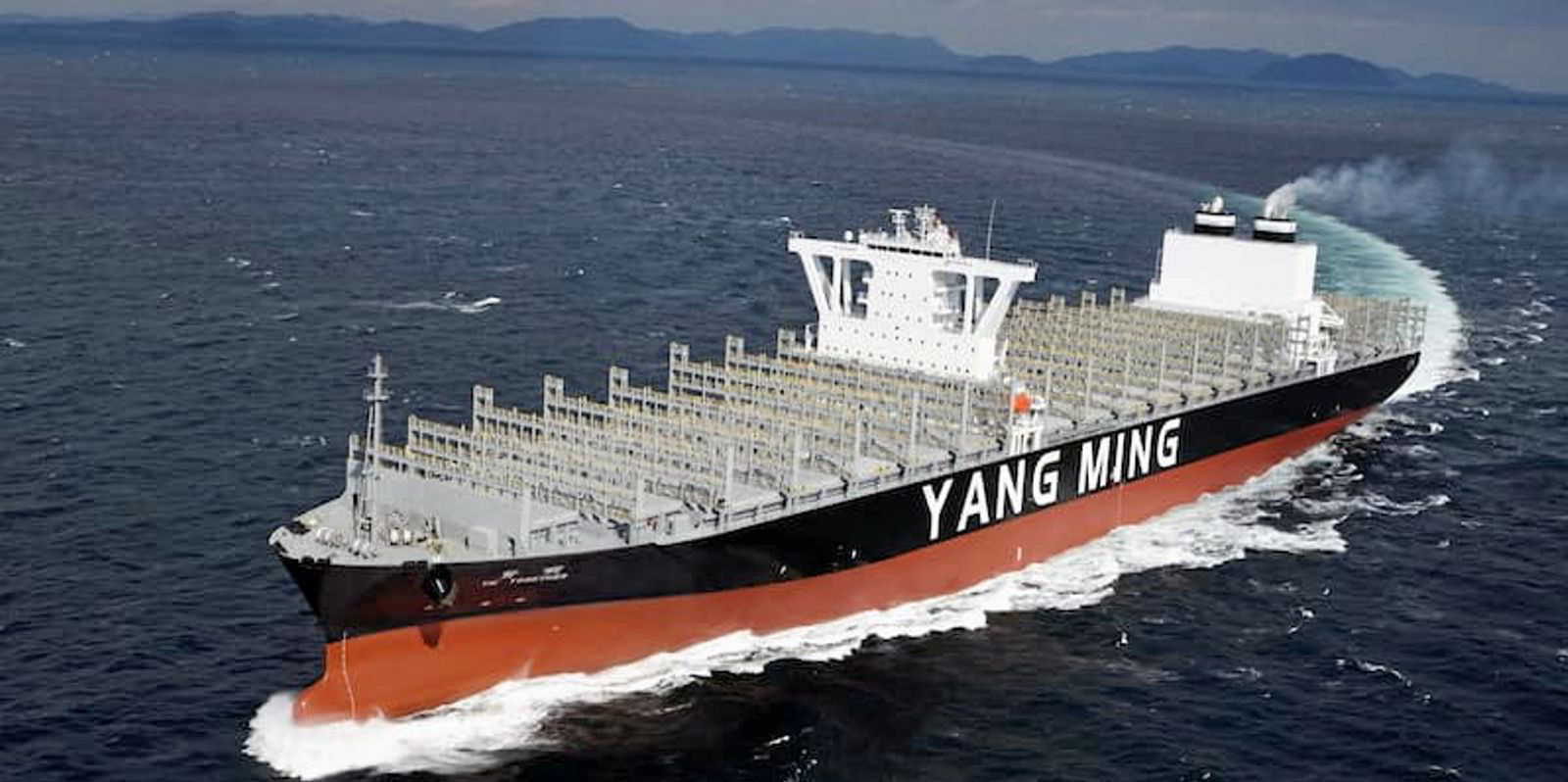Record container ship newbuilding deliveries are failing to rein in a rampant freight market.
A monthly record of 317,000 teu of newbuildings were delivered into the boxship fleet in April.
That followed an all-time quarterly record of 751,000 teu of container shipping capacity handed over in the first three months of the year, according to Clarksons Research.
The record volume of deliveries — more than 1m teu in four months — had been expected to dampen freight rates.
But the additional ships have had a negligible effect: freight rates rose by more than 20% in the first 10 days of May.
The Freightos Baltic Index stood at $2,902 per 40-foot equivalent unit (feu) on 10 May, up from $2,409 at the beginning of the month. That reflects higher rates from Asia to the US and Europe.
Rates from China to the US rose over the same period by nearly $900 to $3,907 per feu to the US West Coast and $5,089 per feu to the US East Coast.
Rates from Asia to northern Europe are $659 higher at $4,095 per feu.
They are $1,082 higher than the beginning of the month from Asia to the Mediterranean at $5,412 per feu.
Rate increases hold
Lines have pushed through general rate increases in early May, as Red Sea diversions and unseasonal increases in demand helped keep capacity tight.
That has been possible despite the delivery of 41 new ships in March and 50 in April, according to Alphaliner estimates.
Most of the newbuildings come from Chinese shipyards.
Cosco Group and MSC Mediterranean Shipping Company added five ships each in April alone.
“A few years ago, many had predicted that liner shipping would run into a massive overcapacity situation in 2024, but so far, the market has absorbed all the new capacity fairly well,” Alphaliner noted.
It said vessel diversions via the Cape of Good Hope and additional slow steaming due to stricter environmental regulations have “artificially” created fresh tonnage demand.
That demand may stem from shippers pulling peak season shipments forward amid concerns that Red Sea diversions or potential labour disruptions in the US might cause delays, said Freightos head of research Judah Levine.
Any delay may “force liners to speed up to make up for the longer transit time, potentially risking overloading destination ports in Europe if vessels arrive on erratic schedules”, according to a note from HSBC Global Research.
Higher and higher
The orderbook stands at 6.1m teu, 21% of the current fleet size, said Niels Rasmussen, chief shipping analyst at Bimco.
He expects delivery volumes for the year are on target to exceed 3m teu, 30% higher than last year’s record.

In 2025, deliveries are expected to be just below 2m teu, still the third-highest number of deliveries of any year barring 2023 and 2024.
“The record high ship deliveries were expected to create significant oversupply in the market, and while this did impact the market in 2023, it appears that deliveries this year instead contribute to keeping global container trade moving,” Rasmussen said.
Rerouting of ships around southern Africa means about 10% more capacity is needed to manage global container trades, he said.
The capacity needed to manage any market growth should be added to that 10%.
Some observers question how long the rates bonanza can last, although liner operators and owners that charter ships are making hay.
“When ships start increasing sailings via the Red Sea and the Suez Canal, we will most likely see significant oversupply,” Rasmussen noted.
Between 2019 and 2023, the fleet grew by 21% while container volumes grew by only 4%. Between 2023 and 2025, the fleet is expected to grow a further 15%.





